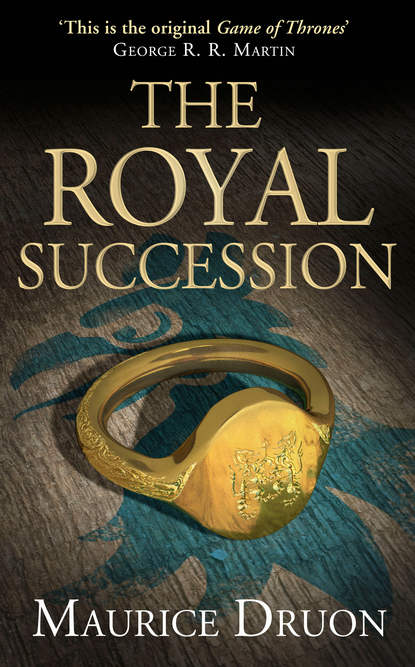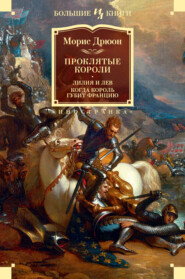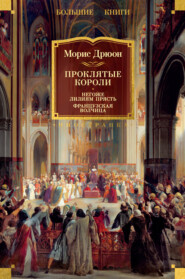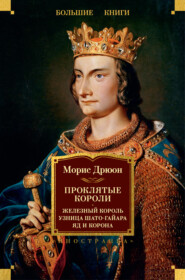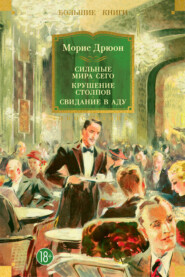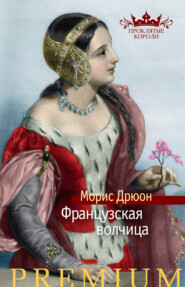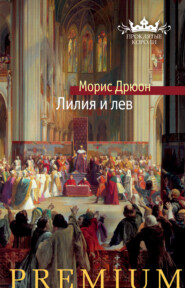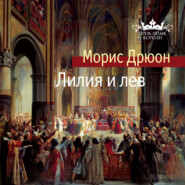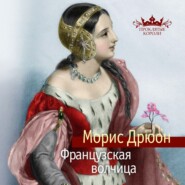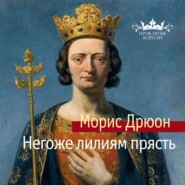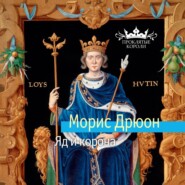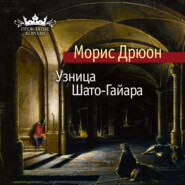По всем вопросам обращайтесь на: info@litportal.ru
(©) 2003-2024.
✖
The Royal Succession
Автор
Год написания книги
2019
Настройки чтения
Размер шрифта
Высота строк
Поля
JEAN DE CORBEIL and JEAN DE BEAUMONT, called the Déramé, Marshals.
PIERRE DE GALARD, Grand Master of the Crossbowmen.
ROBERT DE GAMACHES and GUILLAUME DE SERIZ, Chamberlains.
GEOFFROY DE FLEURY, Bursar.
THE CARDINALS:
JACQUES DUÈZE, Cardinal in Curia, then Pope Jean XXII, aged 72.
FRANCESCO CAETANI, nephew of Pope Boniface VIII.
ARNAUD D’AUCH, Cardinal Camerlingo.
NAPOLÉON ORSINI, JACQUES and PIERRE COLONNA, BÉRENGER FRÉDOL, elder and younger brothers, ARNAUD DE PÉLAGRUE, STEFANESCHI, and MANDAGOUT, etc.
THE BARONS OF ARTOIS:
The Lords of VARENNES, SOUASTRE, CAUMONT, FIENNES, PICQUIGNY, KIÉREZ, HAUTPONLIEU, BEAUVAL, etc.
THE LOMBARDS:
SPINELLO TOLOMEI, a Siennese banker living in Paris.
GUCCIO BAGLIONI, his nephew, aged 20.
BOCCACCIO, a traveller, father of the poet Boccaccio.
THE CRESSAY FAMILY:
DAME ELIABEL, widow of the Lord of Cressay.
JEAN and PIERRE, her sons, aged 24 and 22 respectively.
MARIE, her daughter, aged 18.
ROBERT DE COURTENAY, Archbishop of Rheims.
GUILLAUME DE MELLO, Councillor to the Duke of Burgundy.
MESSIRE VARAY, Consul of Lyons.
GEOFFROY COQUATRIX, a Burgess of Paris, an army contractor.
MADAME DE BOUVILLE, wife of the one-time Chamberlain.
BÉATRICE D’HIRSON, niece of the Chancellor of Artois, Lady-in-Waiting to the Countess Mahaut.
All the above names have their place in history.
The Royal Succession (#ulink_1cfd3e3b-ef50-5df9-b8ba-5f035db5c31d)
Queens wore white mourning.
The wimple of fine linen, enclosing her neck and imprisoning her chin to the lip, revealing only the centre of her face, was white; so was the great veil covering her forehead and eyebrows; so was the dress which, fastened at the wrists, reached to her feet. Queen Clémence of Hungary, widowed at twenty-three after ten months of marriage to King Louis X, had donned these almost conventual garments and would doubtless wear them for the rest of her life.
Prologue (#ulink_b0399ebd-5a0a-5dbe-967e-b643e8729800)
IN THREE HUNDRED AND twenty-seven years, from the election of Hugues Capet to the death of Philip the Fair, only eleven Kings had reigned in France and each one had left a son to ascend the throne.
It was a prodigious dynasty, which Providence seemed to have marked out for duration and permanence. Only two of the eleven reigns had covered less than fifteen years.
This singular continuity in the exercise and transmission of power had allowed, if not determined, the formation of national unity.
For the feudal link, a purely personal one between vassal and suzerain, between the weaker and the stronger, was substituted gradually another relationship, another compact uniting the members of a vast human community which had for long been subject to similar vicissitudes and an identical law.
If the concept of the nation had not yet become evident, its symbol already existed in the person of the sovereign, the supreme source of authority and the ultimate court of appeal. Whoever thought of the King also thought of France.
And Philip the Fair, throughout his life, had set himself to cement this nascent unity with a powerful centralized administration and the systematic destruction of external and internal rivalry.
Hardly had the Iron King died, when his son, Louis X, followed him to the grave. The population could not help but see in these two deaths, kings struck down in their prime, one following so quickly on the other, the finger of fate.
Louis X, the Hutin, had reigned eighteen months, six days and ten hours. During this short period of time, this pitiful monarch had destroyed the greater part of his father’s achievement. His reign had seen the murder of his Queen and the hanging of his first minister; famine had ravaged France; two provinces had rebelled; and an army had been engulfed in the Flanders mud. The great nobles were infringing on the royal prerogatives once more; reaction was all-powerful; and the Treasury empty.
Louis X had ascended the throne at a moment when the world lacked a Pope; he died before a Pontiff had been elected, and Christendom trembled on the verge of schism.
And now France was without a king.
For Louis X, by his marriage to Marguerite of Burgundy, had left only a daughter of five years of age, Jeanne of Navarre, who was suspected strongly of bastardy. By his second marriage, he had bequeathed but an expectation: Queen Clémence was pregnant; but would not be brought to bed for five months. Moreover, it was being canvassed openly that the Hutin had been poisoned.
No disposition had been made for a regency; and personal ambitions resulted in individual attempts to seize power. In Paris the Count of Valois endeavoured to have himself proclaimed Regent. At Dijon the Duke of Burgundy, brother of the murdered Marguerite and the powerful head of a baronial league, undertook to avenge the memory of his sister by championing the rights of his niece. At Lyons the Count of Poitiers, elder surviving brother of the Hutin, was grappling with the intrigues of the Cardinals and vainly striving to force the Conclave to a decision. The Flemings were but awaiting the occasion to take up arms again; while the nobility of Artois was pertinaciously conducting a civil war.
All this was enough to remind the people of the curse pronounced two years before by the Grand Master of the Templars from among the faggots of his pyre. In that age of superstition, it might well have seemed, in the first week of June 1316, that the Capets were an accursed race.
PART ONE (#ulink_70da14a7-e89f-5bf5-ac7f-a139646f7f5d)
1 (#ulink_37933380-cb17-51f4-89ca-bc3921923026)
The White Queen (#ulink_37933380-cb17-51f4-89ca-bc3921923026)
QUEENS WORE white mourning.
The wimple of fine linen, enclosing her neck and imprisoning her chin to the lip, revealing only the centre of her face, was white; so was the great veil covering her forehead and eyebrows; so was the dress which, fastened at the wrists, reached to her feet. Queen Clémence of Hungary, widowed at twenty-three after ten months of marriage to King Louis X, had donned these almost conventual garments and would doubtless wear them for the rest of her life.
Henceforth no one would look on her wonderful golden hair, on the perfect oval of her face, and on the calm, lustrous splendour which had struck all beholders and made her beauty famous.
The narrow and pathetic mask, framed in its immaculate linen, bore the marks of sleepless nights and days of weeping. Even her gaze had altered, never coming to rest but seeming to flutter across the surface of people and of things. The lovely Queen Clémence already looked like the effigy on her tomb.





